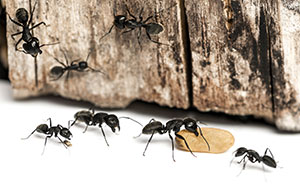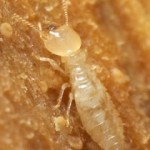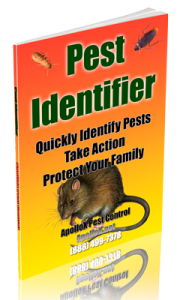Pest Free Landscaping – What’s that?
It’s Spring at last! North-easterners are emerging from their homes to enjoy the outdoors. The first place we all notice is our yard and garden. Which plants made it through the Winter? We begin to clean up the Winter damage and design our garden.
Guess who else is emerging this Spring? Carpenter ants and termites. The way you clean-up and re-plant your landscape this Spring will make a great difference whether or not these pests find a way into your home.
What is pest-free landscaping? We’re not talking about a landscape that is free of insects. In this article, we use the term “pest-free landscaping” to refer to landscaping that doesn’t encourage pests to enter into your home.
Pest Free Landscaping – Soil and Mulch
One common Spring gardening activity is the re-application of a fresh layer of mulch and bark dust. Mulch and bark dust help keep the soil from drying out during the hot Summer and therefore promote healthy plant growth. But this moisture quality in mulch becomes a great environment for termites and carpenter ants. When the mulch layers pile up over the years until they are in contact with the wooden siding on your home, this becomes a major highway for carpenter ants and termites to enter into your home.
It’s best to keep mulch at least 4″ below the place where your home’s concrete foundation ends and the wooden structure begins. In addition, don’t let the mulch layer thicken beyond 3″. Excessive mulch can harm plants while becoming a super hotel for carpenter ants and termites.
Pest Free Landscaping – Raised Gardens
Do you have a raised garden against the side of your home? If so, you’ll be watering it throughout the Summer, keeping the soil moist so the plants can grow. However, this moist soil right against your house can harbor carpenter ants and termites. They also love the wet wooden sides of the planter. It’s pretty easy for them to tunnel right through the planter and into your home! Make sure there is an insect-proof lining between the planter and your home. Concrete or metal is a good choice.
Pest Free Landscaping – Trees and Large Plants
One great highway pests use to enter your home is trees and large plants that are in direct contact with the house. Eliminating this natural insect highway will go a long way toward preventing a carpenter ant or termite infestation. Inspect the area around your house for any tree branches that are in direct contact with the structure or overhanging the roof. Trim them back. Do you have vines growing up the siding? As attractive as they look, you might want to eliminate them.
Pest Free Landscaping – Thick Ground-cover
That dense ivy growing right up to the walls of your home keeps the soil moist, which in turn encourages carpenter ants and termites. Cut it back a few feet from your home so the soil immediately around your home can dry out, providing a natural barrier against these pests.
Pest Free Landscaping – How well did you do?
If you see any of the following signs, you might revisit your pest-free landscaping strategy.
- Swarmers (Winged ants)-This is a sign that the colony is looking to expand and look for a new nesting site
- Sawdust (fine wood shavings that the Carpenter Ants push aside to create nesting sites, known as “frass”)
- Crunching noises behind the wall
- Seeing more than 10 ants a day throughout your house, or seeing any ants inside your house in the winter months
- Mud tunnels or mud tubes. These are typically found on the sides of foundations
- Swarmers (Winged Termites)-This is a sign that the nest is near
- Damaged wood-The wood will appear to be crushed, or you will see tunnels. Galleries will be filled with soil and chewed wood, while ant tunnels are very clean














Recent Comments